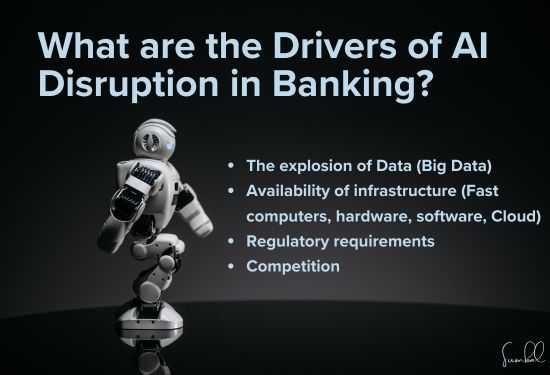AI is transforming banking services so that each transaction is more effective and quick. These technologies are not limited to AI-powered chatbots but enhanced fraud detection and customized banking services and products. Here is a breakdown of how AI is changing the customer's banking experience.

1. Chatbots for Instant Customer Support
At the moment, most banking applications and websites have integrated AI-powered Chatbots that are available to customers and provide service at any time. Such virtual assistants may include simple functions such as checking balances, money transfers, or other basic questions regarding banking products.
In contrast to more conventional customer support methods, chatbots offer instant answers, so there is no delay. These AI tools are able to interpret information within a human style of communication through natural language processing (NLP), hence making the interaction as smooth as possible.
For instance, an AI chatbot recommends the right product if a client is still determining which loan type to apply for. This saves time and allows the organization to provide consistent and accurate support for their needs.

2. Fraud Detection and Prevention
Unique AI algorithms constantly run in real-time, analyzing transactions for any signs of fraud. For example, if a transaction is from a suspicious geographic area or is beyond average spending, the AI systems can alert the account for investigation or even freeze the transaction. These systems are capable of dynamically adapting to new fraud tactics, making them very effective in preventing fraud.
Further, non-associative Machine Learning fraud detection reduces false alarms by examining broader transaction contexts like clients’ history and device activity. This means it enhances security more than the previous methods, with less hampering the user’s comfort.
3. Personalized Banking Services
AI is proving instrumental in providing personalized banking services as it presents a customized solution to the problem. It also ensures that savings needs, credit payment plans, and all financial services are tailored to fit the specific needs of individuals.
For instance, one AI tool can analyze one’s spending patterns and suggest the best ways to save money or invest. Few banks also implement AI using algorithms that analyze customers’ spending and suggest overdraft protection or low-interest advances. Such a degree of customization enhances customers' bond with the bank.

4. Streamlined Transactions and Automation
AI makes common banking activities easier, faster, and more efficient. For example, mobile check deposits can be made possible by using AI because it is easier to analyze check images in real time. In the same way, an automated payment schedule eliminates the possibility of late payment, thus freeing the owner from the risk of paying extra charges.
Some banks have also incorporated AI to speed up credit and account opening processes. Using tools such as document verification or credit assessment, AI shortens approval time from days to minutes, which has a positive impact on customer experience.
5. Cost Savings and Financial Literacy
AI tools assist customers in cutting costs, as they pinpoint areas where they do not need to spend any money, where they should pay, and how much they should. Some examples include an app that would utilize AI in that it would be able to categorize transactions and also remind the user about due payment. Today, AI-based platforms are paying more attention to financial knowledge because they provide customers with tutorials on performing successful financial operations.





